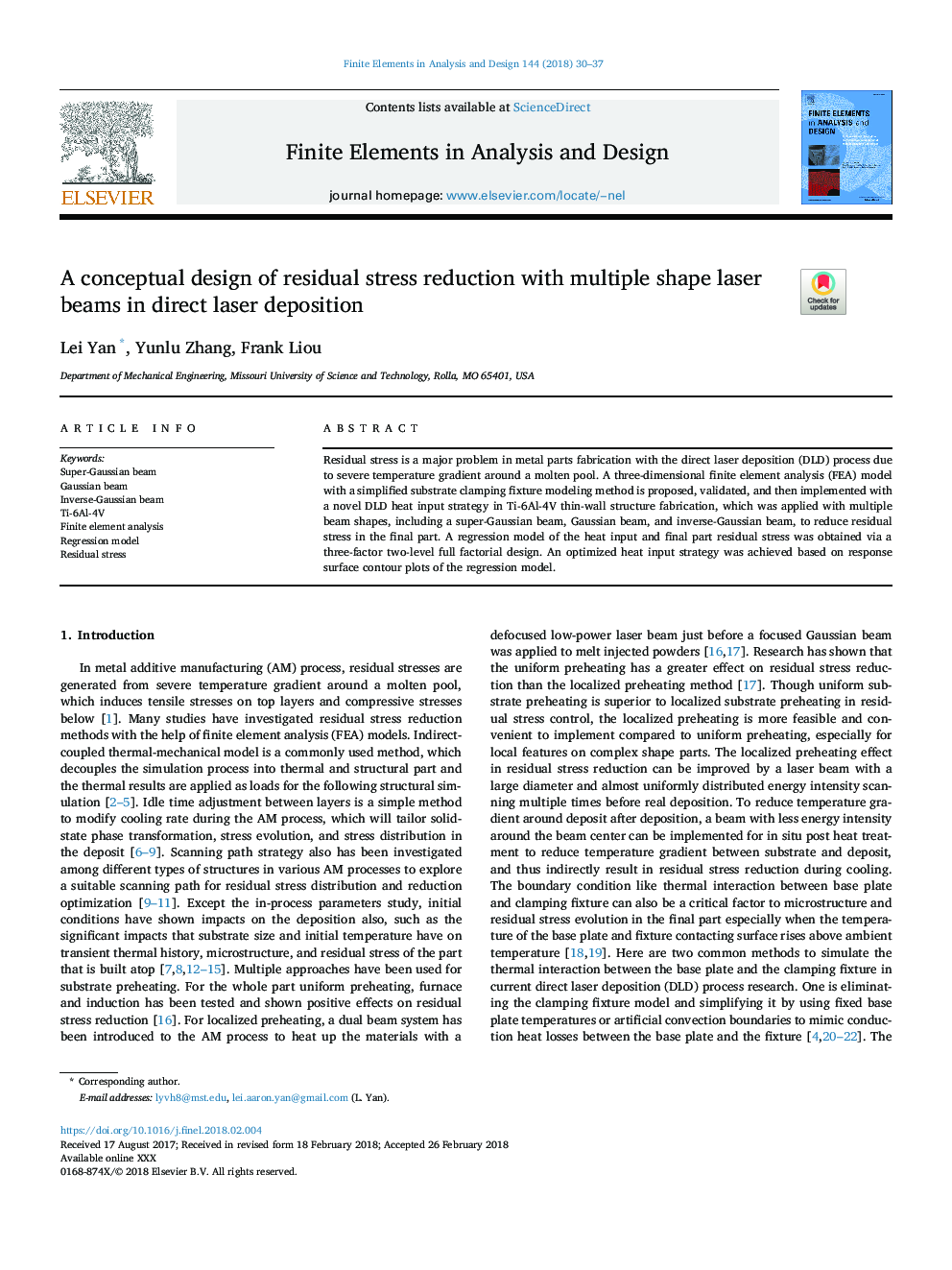| Article ID | Journal | Published Year | Pages | File Type |
|---|---|---|---|---|
| 6925336 | Finite Elements in Analysis and Design | 2018 | 8 Pages |
Abstract
Residual stress is a major problem in metal parts fabrication with the direct laser deposition (DLD) process due to severe temperature gradient around a molten pool. A three-dimensional finite element analysis (FEA) model with a simplified substrate clamping fixture modeling method is proposed, validated, and then implemented with a novel DLD heat input strategy in Ti-6Al-4V thin-wall structure fabrication, which was applied with multiple beam shapes, including a super-Gaussian beam, Gaussian beam, and inverse-Gaussian beam, to reduce residual stress in the final part. A regression model of the heat input and final part residual stress was obtained via a three-factor two-level full factorial design. An optimized heat input strategy was achieved based on response surface contour plots of the regression model.
Related Topics
Physical Sciences and Engineering
Computer Science
Computer Science Applications
Authors
Lei Yan, Yunlu Zhang, Frank Liou,
